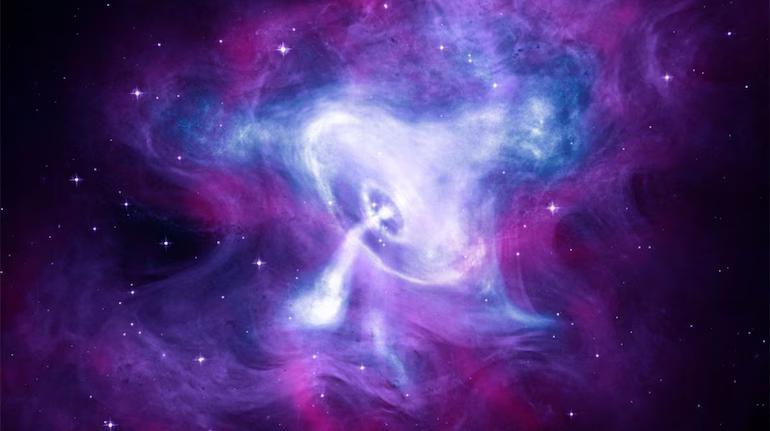
Pulsar that Spins 30 Times a Second Captured Inside Crab Nebula
Located about 6,500 light-years away in the constellation of Taurus, the Crab Nebula is one of the most iconic and studied objects in the universe. This stunning astronomical wonder is the remnant of a supernova explosion that occurred in 1054 AD, and has been fascinating astronomers and scientists for centuries. Recently, NASA’s Hubble Space Telescope has captured a breathtaking image of the Crab Nebula’s core, revealing a pulsar that spins an astonishing 30 times a second. This incredible find has provided scientists with a unique opportunity to study the inner workings of this cosmic dynamo.
The Crab Nebula is a result of a massive star that exploded in a supernova, leaving behind a neutron star at its center. This city-sized star is incredibly dense, with the mass of about 1.4 times that of our Sun, despite its tiny size. The neutrons in the star are packed so tightly that a sugar-cube-sized amount of its material would have a mass of about a billion tons.
The pulsar at the heart of the Crab Nebula is a remarkable object in its own right. As it spins, it creates powerful magnetic fields that are at least 100 trillion times stronger than those on Earth. These fields are so strong that they are capable of accelerating particles to nearly the speed of light, producing intense radiation that is seen as a bright spot within the swirling gases of the nebula.
The radiation emitted by the pulsar is not just a result of its intense magnetic fields, but also its incredibly rapid spin. The pulsar’s rotation rate of 30 times a second is incredibly fast, making it one of the fastest-spinning pulsars known. This rapid spin creates a strong electromagnetic wind that blows against the surrounding gas and dust, driving shock waves that propagate through the nebula.
The Crab Nebula is a dynamic and complex object, with many different features and processes occurring within it. The pulsar at its center is the driving force behind many of these processes, and studying it has provided scientists with a unique insight into the inner workings of this cosmic dynamo.
The image captured by the Hubble Space Telescope shows the pulsar as a bright spot at the center of the nebula, surrounded by a halo of radiation and particles. The pulsar’s strong magnetic fields are visible as a series of bright streaks and arcs, while the surrounding gas and dust are illuminated by the intense radiation emitted by the pulsar.
The study of the Crab Nebula and its pulsar is an ongoing one, with scientists using a range of different telescopes and instruments to study this incredible object. The Hubble Space Telescope has been instrumental in this research, providing high-resolution images of the nebula and its pulsar that have helped scientists to better understand the inner workings of this cosmic dynamo.
In conclusion, the capture of a pulsar that spins 30 times a second inside the Crab Nebula is a significant discovery that has provided scientists with a unique opportunity to study the inner workings of this cosmic dynamo. The pulsar’s incredible spin rate and powerful magnetic fields are driving a range of different processes within the nebula, creating a dynamic and complex object that is fascinating to study. As scientists continue to study the Crab Nebula and its pulsar, they are likely to uncover even more secrets about this incredible object.
Source:






